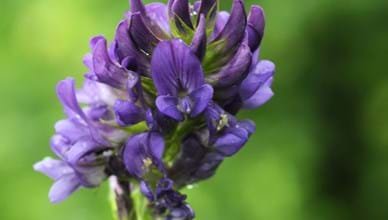Alfalfa value chain at a regional scale (Province of Bologna, Italy)

Alfalfa cultivation in Italy is mainly used for dairy cattle feeding for cheese production. Grana Padano and Parmigiano-Reggiano are the two main Italian PDO cheeses and they use more than 40% of the milk produced in Northern Italy. The area invested in alfalfa is about 700,000 ha mainly concentrated in Northern and Central part of the country. The region where this cultivation is most practiced is Emilia Romagna, for Parmigiano-Reggiano cheese (about 240,000 ha); follow Marche (70,000 ha), Lombardy, Umbria and Lazio (about 50,000 ha each) and the other regions with lower investments.
The present case study focuses on the value chain for alfalfa production for dairy cattle feeding for Parmigiano-Reggiano cheese production. Considering the climatic conditions of the Parmigiano-Reggiano production area, and the fact that a significant amount of land in the area is not under irrigation, alfalfa is a particularly suitable crop for Parmigiano-Reggiano dairy farms. Alfalfa production represents an important resource for dairy cattle farms because of the amounts of protein and fibre it guarantees. The cultivation of alfalfa is considered the mainstay of forage production in the Parmigiano-Reggiano production area. Alfalfa production is also contributing to sustainable agriculture because of its productivity of feed protein, which is the highest among forage and grain legumes. The case study will focus on the production chain for alfalfa production, working with different actors across the production chain. The features of the alfalfa production chain will be evaluated and reviewed using interviews to farmers, collectors and processors and will aim to define their legume knowledge, benefits and constraints experienced in developing the market.



